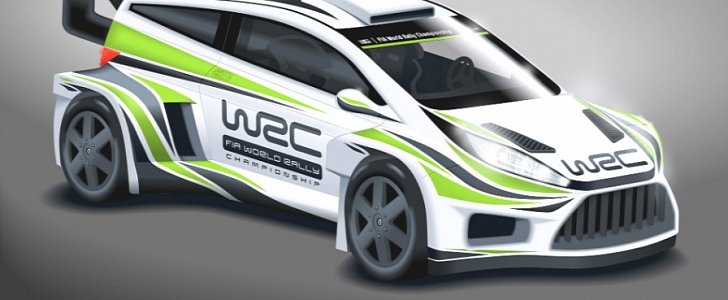WRC rally cars are headed for a makeover and a hefty list of mechanical changes that will make them even more competitive, as FIA World Motor Sport Council in Mexico City prepares new technical regulations for 2017.
As motorsport fans know, a racecar's appearance has nothing to do with winning beauty contests. Therefore, the racer's body kit is designed for more practical purposes known as aerodynamics and downforce. But then came rally cars.
For some reason, FIA's proposal for 2017 in terms of body kits looks both aggressive and bigger that what we can see on today's race cars since 2011. The aero package includes larger rear wing and a 55 mm increase in permitted width and a greater overhang at the front and rear.
"There were three main objectives with these regulations: make the car spectacular, be mindful of costs, and maintain, if not increase safety. The cars will be striking, there is no doubt about that, and there are small but always significant improvements in relation to safety,” said FIA technical director Bernard Niclot.
But it's not just the rally cars' exterior that will change. FIA says engine output will be raised to 380 bhp through an increase in turbo restrictor size to 36 mm. Also, racers will be fitted again with electronically-controlled centre differentials, but this time these components will be 25 kg (55 lbs) lighter.
With these changes, the cars will gain more downforce and more grip, which will eventually translate into more speed going into corners. Also, the show put on by the race cars and the drivers will become more spectacular for the fans, so it's a win-win situation.
For some reason, FIA's proposal for 2017 in terms of body kits looks both aggressive and bigger that what we can see on today's race cars since 2011. The aero package includes larger rear wing and a 55 mm increase in permitted width and a greater overhang at the front and rear.
"There were three main objectives with these regulations: make the car spectacular, be mindful of costs, and maintain, if not increase safety. The cars will be striking, there is no doubt about that, and there are small but always significant improvements in relation to safety,” said FIA technical director Bernard Niclot.
But it's not just the rally cars' exterior that will change. FIA says engine output will be raised to 380 bhp through an increase in turbo restrictor size to 36 mm. Also, racers will be fitted again with electronically-controlled centre differentials, but this time these components will be 25 kg (55 lbs) lighter.
With these changes, the cars will gain more downforce and more grip, which will eventually translate into more speed going into corners. Also, the show put on by the race cars and the drivers will become more spectacular for the fans, so it's a win-win situation.
